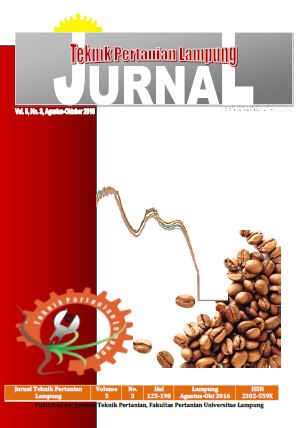PEMBUATAN SABUN PADAT TRANSPARAN MENGGUNAKAN MINYAK KELAPA SAWIT (Palm oil) DENGAN PENAMBAHAN BAHAN AKTIF EKSTRAK TEH PUTIH (Camellia sinensis)
Abstract
Transparent soap is a kind of solid soap. The addition of white tea extracts could be expected to increase the
advantageof transparent soap. The purpose of this research was to determine process and formulation for the
making of transparent solid soap using palm oil based with addition white tea extracts and its effect to the
characterictics of transparent solid soap. This reasearch was used laboratory experimental method using descriptive
analysis. The treatment of this reasearch were addition of white tea extracts using concentrations 1% (w/v) with
the addition of A= 0% (w/v), B=0.5% (w/v), C=1.0% (w/v), and D=1.5% (w/v). Parameters observed were
organoleptic, chemical properties, antibacterial activity, hardness, and stability of foam. Organoleptic test results
showed that panelists prefer soap treatment B with a percentage of 36.67%. The chemical properties of this soap
was in accordance with SNI solid soap No.06-3532-1994, except amount of fatty acids. The value of water content
and evaporated substance was 12.17%, the content of free alkali was 0.101%, the content of unsaponified
fraction was 2.10%, and the amount of fatty acid was 35.67%. pH value was in accordance ASTM D 1172-95 with
pH value of 10. The value of hardness was 0.0091 mm/g/s, stability of foam was 39.08%, and antibacterial
activity with inhibition zone diameter was 11.28 mm. It proved that making transparent solid soap using a palm
oil based and the addition of white tea extract as active ingredients could be applied by the community.
Keywords:Transparant Solid Soap, Palm Oil, White Tea Extract
Downloads
Published
Issue
Section
License
- Authors who publish with this journal agree to the following terms:
- Authors retain copyright and grant the journal right of first publication with the work simultaneously licensed under a Creative Commons Attribution-ShareAlike 4.0 International Lice that allows others to share the work with an acknowledgement of the work's authorship and initial publication in this journal.
- Authors are able to enter into separate, additional contractual arrangements for the non-exclusive distribution of the journal's published version of the work (e.g., post it to an institutional repository or publish it in a book), with an acknowledgement of its initial publication in this journal.
- Authors are permitted and encouraged to post their work online (e.g., in institutional repositories or on their website) prior to and during the submission process, as it can lead to productive exchanges, as well as earlier and greater citation of published work (See The Effect of Open Access).
Jurnal Teknik Pertanian Lampung

JTEPL is licensed under a Creative Commons Attribution-ShareAlike 4.0 International License.

